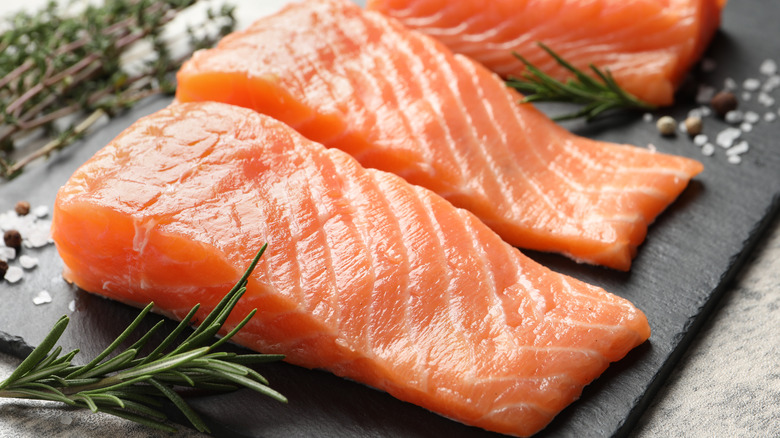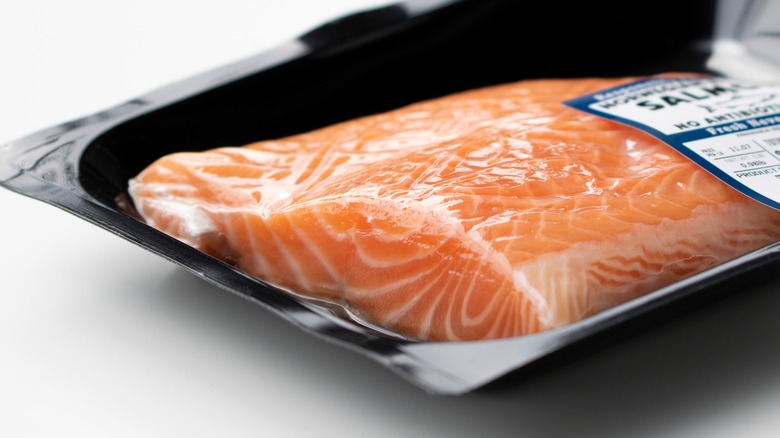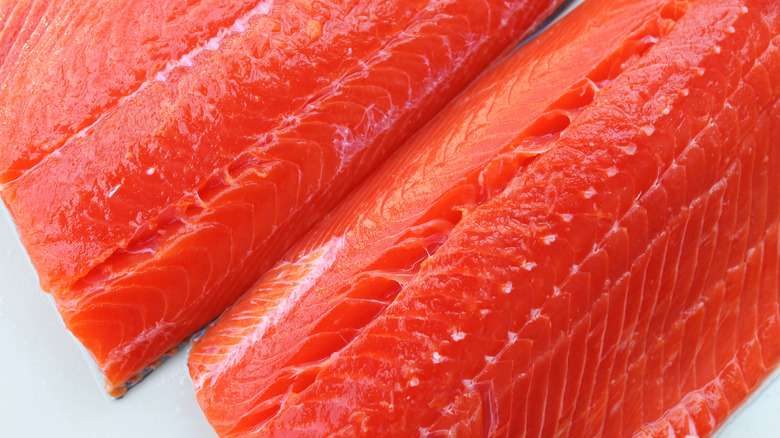Farmed Vs Wild Salmon: The Must-Know Differences
Getting ready to prepare a tasty salmon filet? You might be wondering where exactly your fish came from and if it's the most delicious, nutritious, and sustainable option at the grocery store. The two main types of salmon available are farmed and wild-caught. As the names suggest, the main difference between farmed and wild salmon is the environment where the fish live. Farmed salmon live on farms where they are raised for food. Wild salmon live and reproduce in the wild where they are part of the natural ecosystem.
The environment has an impact on the salmon's body, which changes its nutritional value. Wild salmon tend to have more nutrients than their farmed counterparts, although the exact nutrient content can change because of variables in the environment, including pollutants and the salmon's diet. You can use both varieties interchangeably in recipes, but the taste will be slightly different, with wild salmon having a richer flavor than farmed salmon.
Farmed salmon live in controlled environments
Farmed salmon live in tight quarters and have limited or no access to the type of rich environment where wild salmon live. They aren't able to migrate, which is a natural behavior for many species of salmon. Instead, farmed salmon spend their lives in penned areas or tanks, which can become crowded and hard to navigate. Even the largest tanks or farms can't compare to the diversity that wild salmon encounter in the streams, rivers, and open ocean. Farmed salmon also don't have access to food that they would find in the wild, at least not in the quantities needed to keep up with the entire farm population. So, producers feed farmed salmon a supplementary diet of fish food. This impacts their body composition and ultimately the nutritional value of the salmon that you consume. They tend to be fattier than wild-caught salmon and may also have red dye injected into them to give them a pinker appearance.
Farmed salmon can be easier to find and more affordable for many shoppers at the grocery store. The creation of salmon farms also made it possible for this healthy fish to become available in places and quantities where they otherwise would be hard to transport. Farmed salmon can also be a more eco-friendly option for sustainable protein than other types of meat production.
Wild-caught salmon has a vivid color
On the other hand, wild salmon looks different and tastes richer than farmed. This is due to the food that it eats and its activity level as it swims through the ocean and in rivers and streams. Wild salmon have less fat and more muscle than farmed salmon because they swim much further during their lifetimes. You can also see a clear difference between the two side-by-side at the seafood counter. Wild salmon is a rich orange-pink color thanks to its varied diet in the wilderness, with the pinkish color coming from krill and shrimp. Farmed salmon are much paler and pinker because they aren't exposed to as many food sources, relying mostly on pellet food for their diet.
However, the environment where wild salmon live also means a greater chance of the fish ingesting pollutants like plastics, chemicals, or even mercury. While salmon is considered a low-mercury seafood option, wild-caught salmon has a higher chance of mercury exposure than farmed salmon. Whether you're making salmon poke bowls or grilling the filets on cedar planks, it's important to weigh these pros and cons of farmed and wild-caught salmon before you start.


